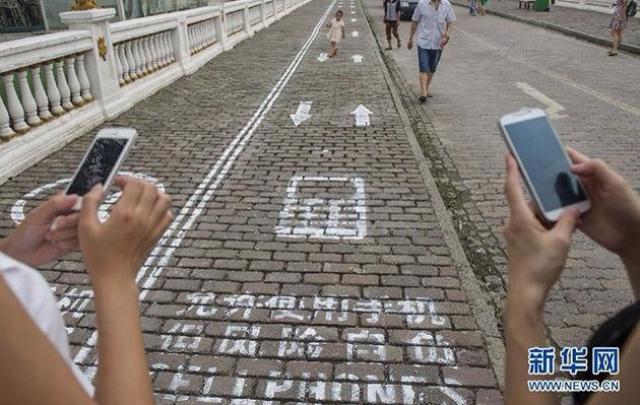
In an effort to keep foot traffic moving, as well as to reduce the chances of potentially nasty collisions involving mobile users not looking where they’re going, city officials have introduced China’s first ‘mobile phone sidewalks.’
While one lane has been designated for non-mobile users, allowing them to walk at a normal pace instead of having to swerve or slow up every time they encounter a phone user, another has been set aside for handset owners, allowing them to freely text, play Swing Copters, and indulge in a bit of mobile shopping without having to worry about bothering others.
To bring some order to the new system, the phone lane has been split into two further lanes to ensure users move in the same direction while fiddling with their phones.
A couple of months back a National Geographic TV show did the same thing with a stretch of sidewalk in Washington, DC, although on that occasion it was part of a behavioral science experiment. Many pedestrians reportedly ignored the lanes (or perhaps they didn’t notice them because they were busy staring at their phones), while some took photos of the novel markings (using their handsets, naturally).
Related: Brit woman plunges into icy canal while texting
With a rise in so-called “distracted walking” accidents linked directly to increased mobile ownership, a number of startups have been experimenting with solutions to deal with the issue.
Juan David Hincapié-Ramos’s CrashAlert system, for example, uses sensors to analyze the immediate environment of a walking phone user, alerting them to various obstacles and hazards.
And if you’re on the streets listening to music on headphones, New York-based One Llama is developing technology aimed at saving you from a pedestrian-based pile-up by turning your mobile device into an “artificial ear,” alerting you to nearby noises you really need to know about, wailing sirens and screeching tires among them.
[Via Mashable]
Editors' Recommendations
- Best cell phone plan deals: T-Mobile, AT&T, Verizon, Mint Mobile and more
- You don’t need a gaming phone to seriously love mobile games
- LG confirms it is closing down its mobile phone business
- Boost Mobile takes on Amazon with Apple iPhone deals during Prime Day 2019


